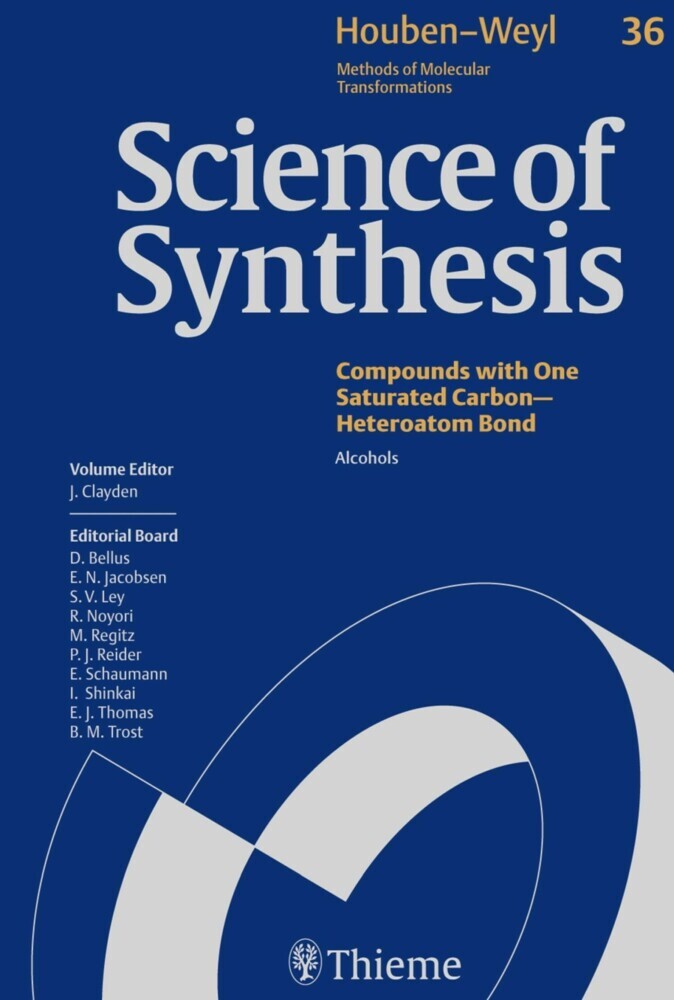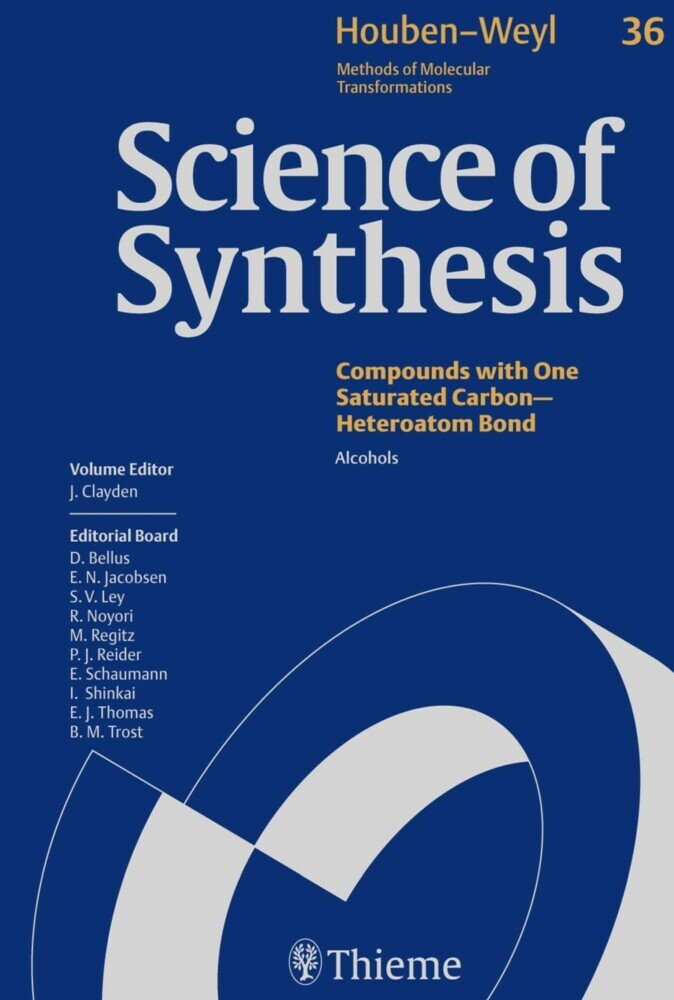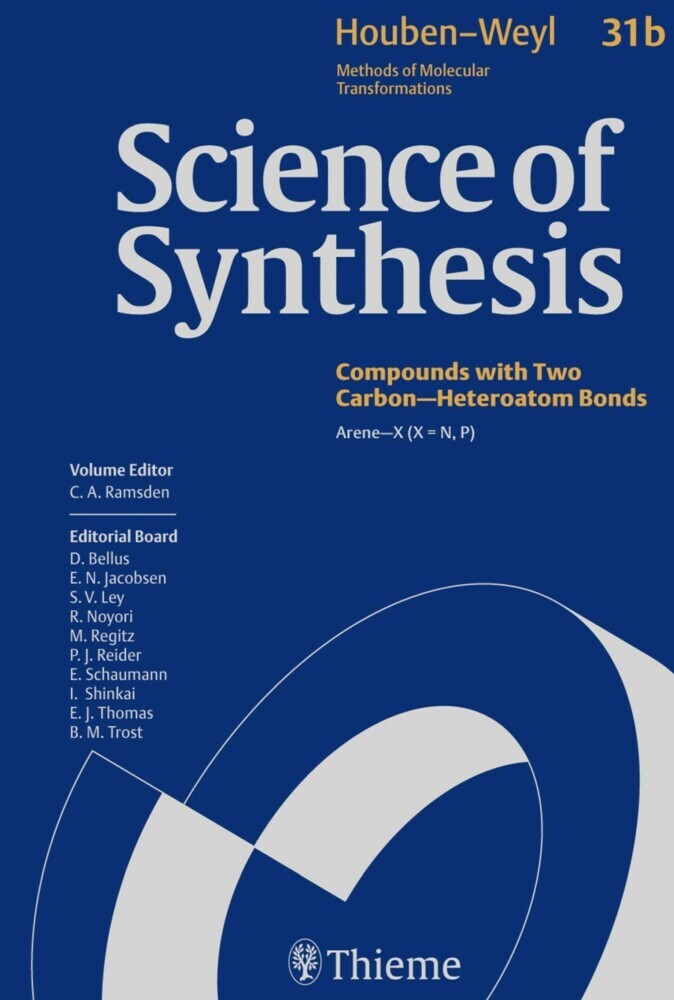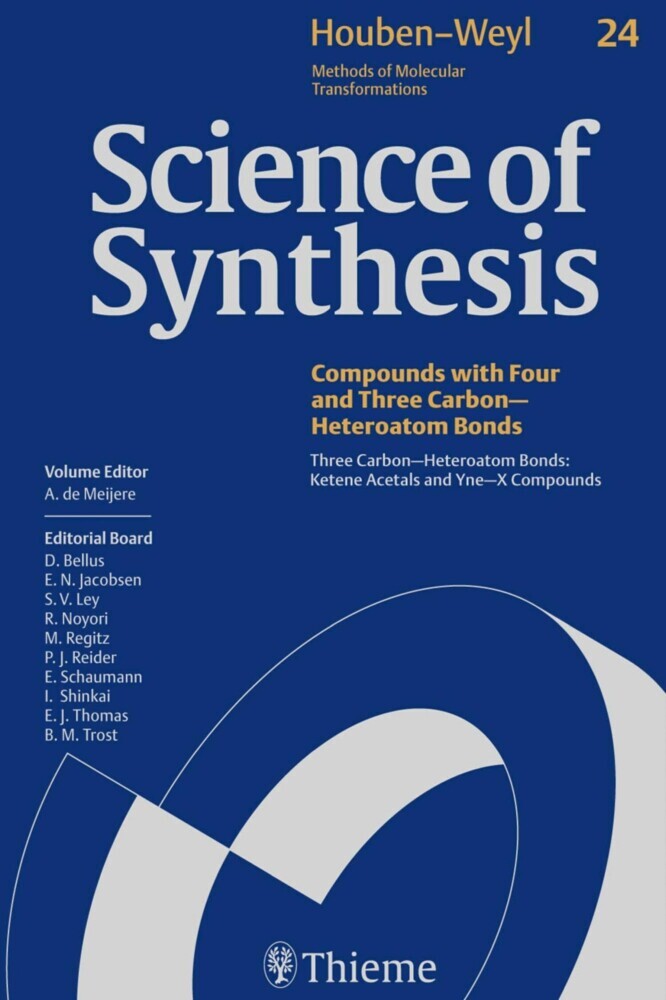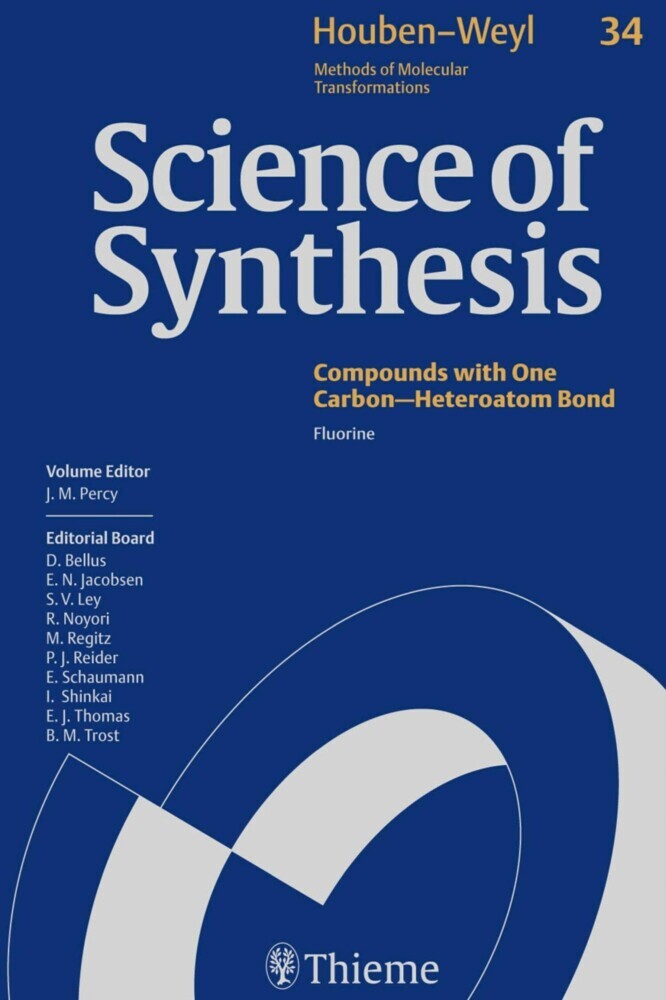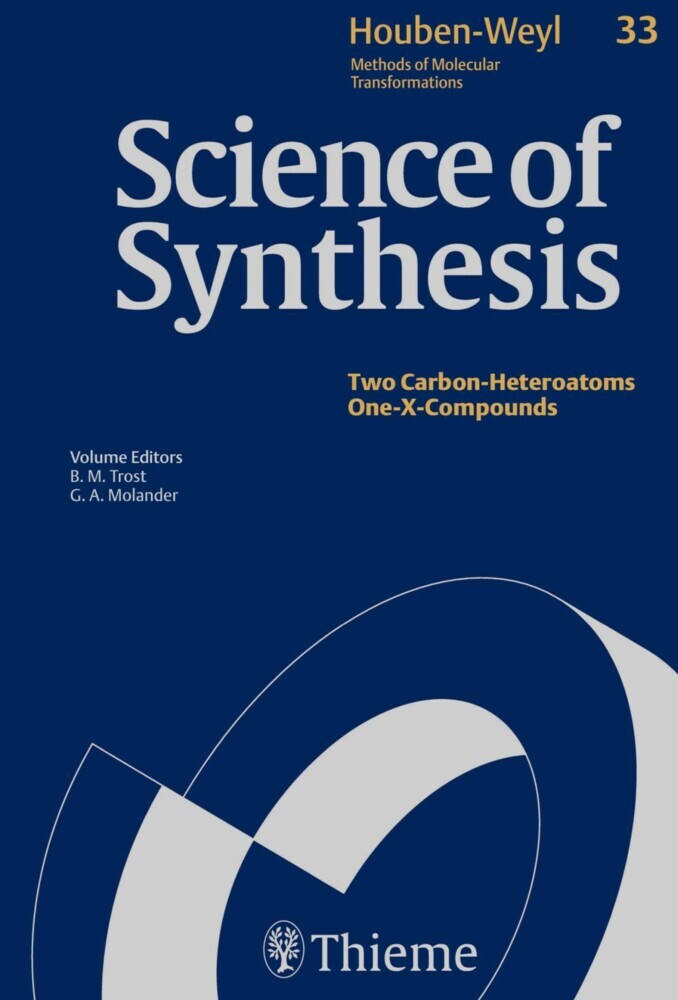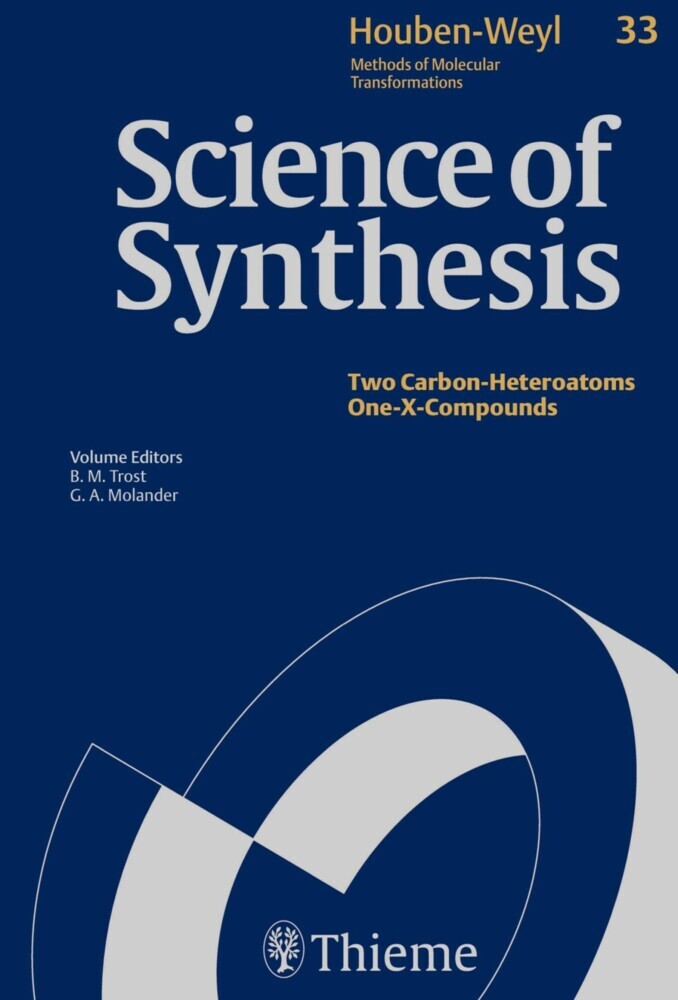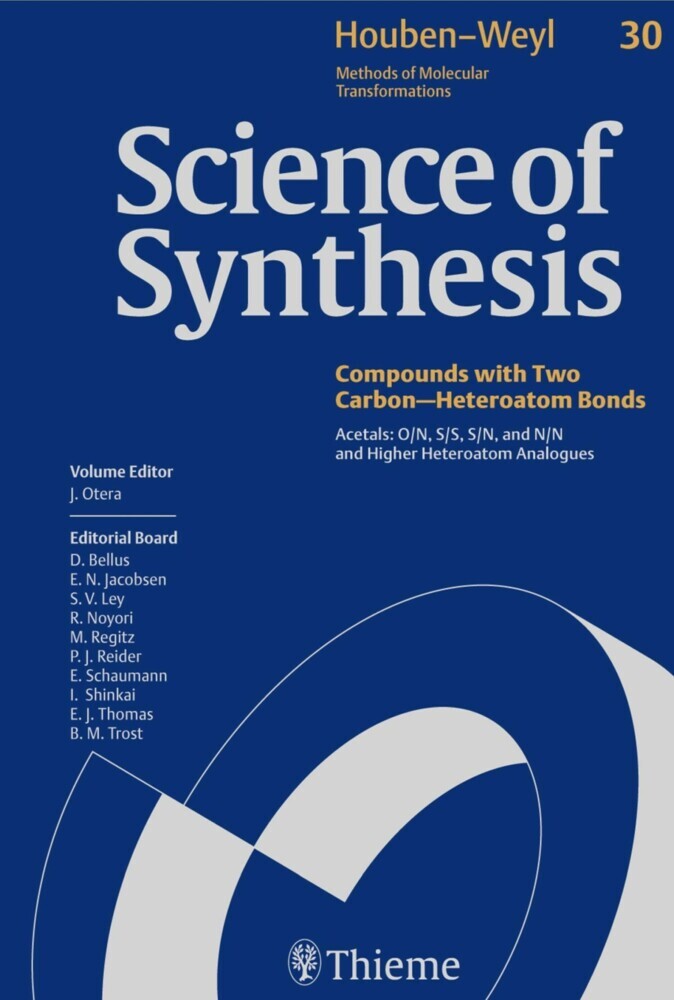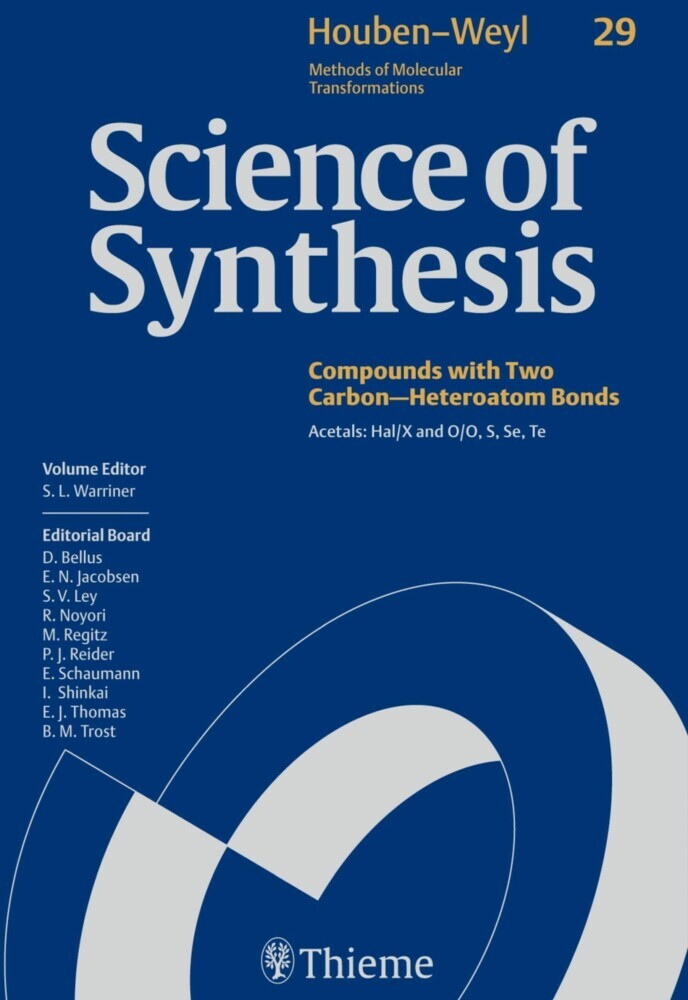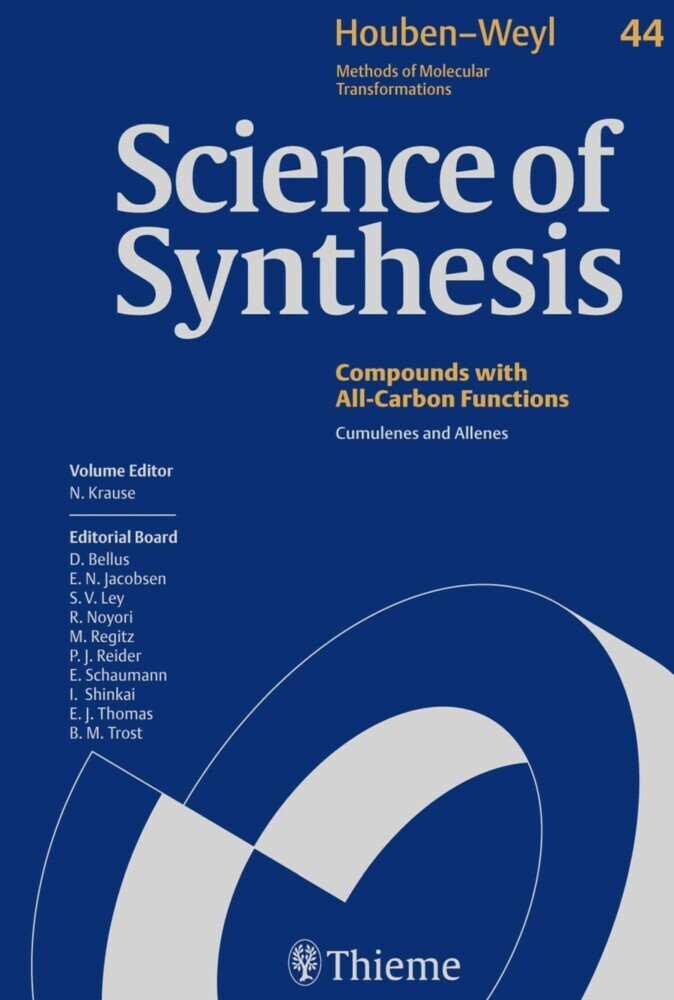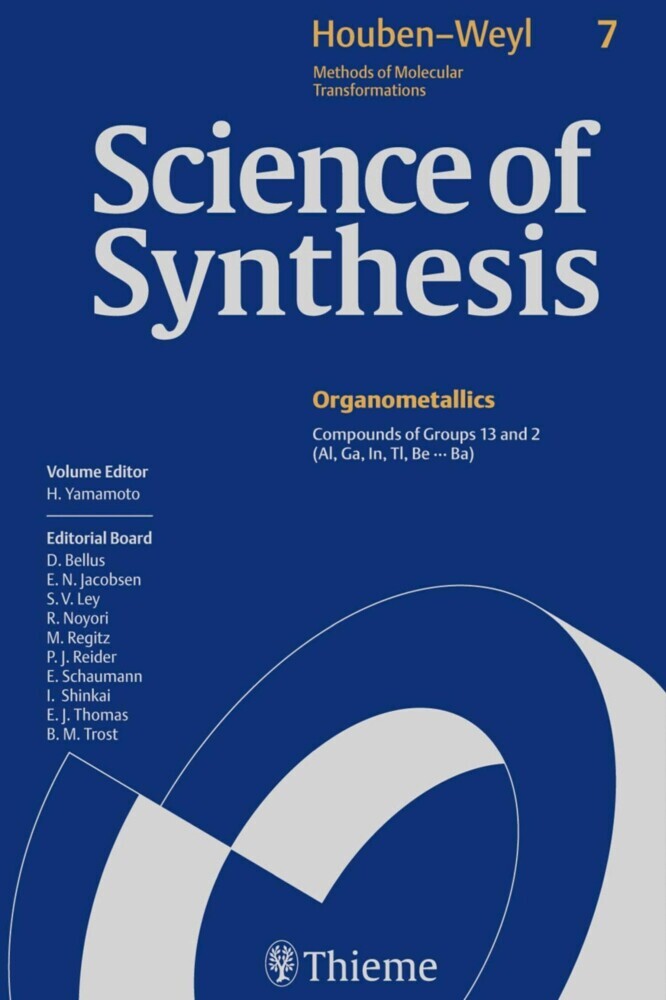Science of Synthesis: Houben-Weyl Methods of Molecular Transformations Vol. 36
Alcohols
Science of Synthesis: Houben-Weyl Methods of Molecular Transformations is the entirely new edition of the acclaimed reference series Houben-Weyl, the standard synthetic chemistry resource since 1909. This new edition is published in English and will comprise 48 volumes published between the years 2000 and 2008.
Science of Synthesis is a quality reference work developed by a highly esteemed editorial board to provide a comprehensive and critical selection of reliable organic and organometallic synthetic methods. This unique resource is designed to be the first point of reference when searching for a synthesis strategy.
- Contains the expertise of presently 400 leading chemists worldwide
- Critically evaluates the preparative applicability and significance of the synthetic methods
- Discusses relevant background information and provides detailed experimental procedures
For full information on the Science of Synthesis series, visit the Science of Synthesis Homepage
1;Science of Synthesis - Volume 36: Alcohols;1 1.1;Title page;3 1.2;Imprint;5 1.3;Preface;6 1.4;Volume Editor's Preface;8 1.5;Overview;10 1.6;Table of Contents;12 1.7;Introduction;36 1.8;36.1 Product Class 1: Alkanols;52 1.8.1;36.1.1 Synthesis by Oxidation;52 1.8.1.1;36.1.1.1 Method 1: Oxidation of Alkanes;52 1.8.1.1.1;36.1.1.1.1 Variation 1: Oxidation with Molecular Oxygen;52 1.8.1.1.2;36.1.1.1.2 Variation 2: Oxidation with Ozone;54 1.8.1.1.3;36.1.1.1.3 Variation 3: Oxidation with Dioxiranes;56 1.8.1.1.4;36.1.1.1.4 Variation 4: Oxidation with Oxaziridines;59 1.8.1.1.5;36.1.1.1.5 Variation 5: Oxidation with Peroxy Acids;60 1.8.1.1.6;36.1.1.1.6 Variation 6: Oxidation with Fluorine;61 1.8.1.1.7;36.1.1.1.7 Variation 7: Oxidation with Metal Porphyrins;62 1.8.1.1.8;36.1.1.1.8 Variation 8: Oxidation with Ruthenium Compounds;64 1.8.1.1.9;36.1.1.1.9 Variation 9: Oxidation with Chromium Compounds;65 1.8.1.1.10;36.1.1.1.10 Variation 10: Oxidation with Methyltrioxorhenium(VII);67 1.8.1.1.11;36.1.1.1.11 Variation 11: Biocatalytic Oxidation;68 1.8.1.2;36.1.1.2 Method 2: Oxidation of Organosilicon Compounds;70 1.8.1.2.1;36.1.1.2.1 Variation 1: Oxidation of Trichlorosilanes;70 1.8.1.2.2;36.1.1.2.2 Variation 2: Oxidation of Alkoxysilanes with Hydrogen Peroxide;71 1.8.1.2.3;36.1.1.2.3 Variation 3: Oxidation of Alkoxysilanes with Peroxy Acids;72 1.8.1.2.4;36.1.1.2.4 Variation 4: Oxidation of Alkoxysilanes with Molecular Oxygen;73 1.8.1.2.5;36.1.1.2.5 Variation 5: Oxidation of Dimethyl(phenyl)silanes;73 1.8.1.3;36.1.1.3 Method 3: Oxidation of Organoboron Compounds;75 1.8.1.3.1;36.1.1.3.1 Variation 1: Oxidation with Basic Hydrogen Peroxide;75 1.8.1.3.2;36.1.1.3.2 Variation 2: Oxidation with Sodium Perborate and Sodium Percarbonate;76 1.8.1.3.3;36.1.1.3.3 Variation 3: Oxidation with Trimethylamine N-Oxide;77 1.8.1.4;36.1.1.4 Method 4: Oxidation of Organomercury Compounds;78 1.8.1.5;36.1.1.5 Method 5: Oxidation of Organolithium, Organomagnesium, Organozinc, and Organocopper Compounds;80 1.8.1.5.1;36.1.1.5.1 Variation 1: Oxidation with Molecular Oxygen;80 1.8.1.5.2;36.1.1.5.2 Variation 2: Oxidation with Alkyl Hydroperoxides;81 1.8.1.5.3;36.1.1.5.3 Variation 3: Oxidation with Bis(trimethylsilyl) Peroxide;82 1.8.1.5.4;36.1.1.5.4 Variation 4: Oxidation with Oxaziridines;83 1.8.2;36.1.2 Synthesis by Reduction;90 1.8.2.1;36.1.2.1 Synthesis of Primary Aliphatic Alkanols;90 1.8.2.1.1;36.1.2.1.1 Method 1: Reduction of Carboxylic Acids;90 1.8.2.1.1.1;36.1.2.1.1.1 Variation 1: Using Metal Aluminum Hydrides and Alkoxyaluminum Hydrides;90 1.8.2.1.1.2;36.1.2.1.1.2 Variation 2: Using Metal Borohydrides and Related Compounds;92 1.8.2.1.1.3;36.1.2.1.1.3 Variation 3: Using Boranes and Related Compounds;94 1.8.2.1.1.4;36.1.2.1.1.4 Variation 4: Using Alane and Related Compounds;97 1.8.2.1.1.5;36.1.2.1.1.5 Variation 5: Using Samarium(II) Iodide;98 1.8.2.1.1.6;36.1.2.1.1.6 Variation 6: Transition-Metal-Catalyzed Reduction;98 1.8.2.1.1.7;36.1.2.1.1.7 Variation 7: Electrochemical Reduction;99 1.8.2.1.1.8;36.1.2.1.1.8 Variation 8: Enzymatic Reduction;99 1.8.2.1.1.9;36.1.2.1.1.9 Variation 9: By In Situ Derivatization;99 1.8.2.1.2;36.1.2.1.2 Method 2: Reduction of Esters;101 1.8.2.1.2.1;36.1.2.1.2.1 Variation 1: Using Metal Aluminum Hydrides and Related Systems;101 1.8.2.1.2.2;36.1.2.1.2.2 Variation 2: Using Metal Borohydrides and Related Systems;102 1.8.2.1.2.3;36.1.2.1.2.3 Variation 3: Using Boranes;105 1.8.2.1.2.4;36.1.2.1.2.4 Variation 4: Using Alane and Other Neutral Organoaluminum Reagents;106 1.8.2.1.2.5;36.1.2.1.2.5 Variation 5: Using Silanes and Siloxanes;107 1.8.2.1.2.6;36.1.2.1.2.6 Variation 6: Using Dissolving Metal Conditions;110 1.8.2.1.2.7;36.1.2.1.2.7 Variation 7: Using Samarium(II) Iodide;110 1.8.2.1.2.8;36.1.2.1.2.8 Variation 8: Transition-Metal-Catalyzed Hydrogenation;110 1.8.2.1.2.9;36.1.2.1.2.9 Variation 9: Electrochemical Reduction;110 1.8.2.1.3;36.1.2.1.3 Method 3: Reduction of Amides;111 1.8.2.1.3.1
Bellus, Daniel
Clayden, Jonathan
| ISBN | 9783131721310 |
|---|---|
| Artikelnummer | 9783131721310 |
| Medientyp | E-Book - PDF |
| Copyrightjahr | 2014 |
| Verlag | Georg Thieme Verlag KG |
| Umfang | 1294 Seiten |
| Sprache | Englisch |
| Kopierschutz | Digitales Wasserzeichen |

